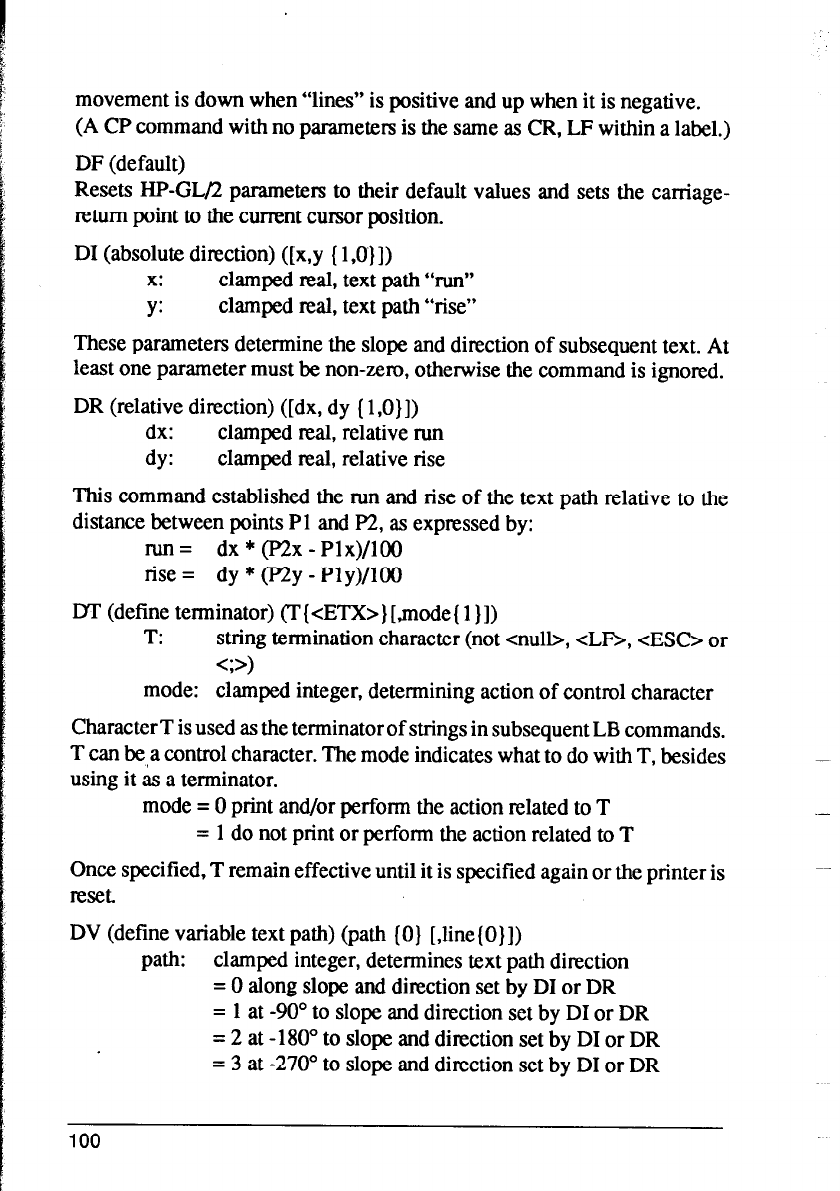
movement is down when “lines” is positive and up when it is negative.
(A CP command with no parameters is the same as CR, LF within a label.)
DF (default)
Resets HP-GL/2 parameters to their default values and sets the carriage-
return point to the current cursor position.
DI (absolute direction) ([x,y { l,O}])
x: clamped real, text path “run”
Y:
clamped real, text path “rise”
These parameters determine the slope and direction of subsequent text. At
least one parameter must be non-zero, otherwise the command is ignored.
DR (relative direction) ([dx, dy ( 1 ,O}])
dx: clamped real, relative run
dy: clamped real, relative rise
This command established the run and rise of the text path relative to the
distance between points Pl and P2, as expressed by:
run =
dx * @‘2x - Plx)/lOO
rise =
dy * (P2y - Ply)/100
DT (define terminator) (I’ { <ETX> } [ ,mode ( 1) 1)
T:
string termination character (not <null>, <LF>, <ESC> or
<;>I
mode:
clamped integer, determining action of control character
CharacterT is used as the terminator of strings in subsequent LB commands.
T can be a control character. The mode indicates what to do with T, besides
using it as a terminator.
mode = 0 print and/or perform the action related to T
= 1 do not print or perform the action related to T
Once specified, T remain effective until it is specified again or the printer is
reset.
DV (define variable text path) (path (0) [,line( 0}])
path: clamped integer, determines text path direction
= 0 along slope and direction set by DI or DR
= 1 at -90” to slope and direction set by DI or DR
= 2 at -180” to slope and direction set by DI or DR
= 3 at -270” to slope and direction set by DI or DR
100


















